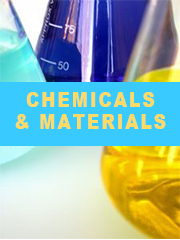TOP CATEGORY: Chemicals & Materials | Life Sciences | Banking & Finance | ICT Media

Download Report PDF Instantly
Report overview
Lithium mining entails the exploration, extraction, and processing of lithium‑bearing resources—principally spodumene‐rich hard‑rock ores and lithium‑brine aquifers—to produce concentrates and chemical precursors such as lithium carbonate (Li₂CO₃) and lithium hydroxide (LiOH). These precursors are refined into battery‑grade salts that underpin lithium‑ion cathode chemistries (NCM, NCA, LFP) widely deployed in electric vehicles (EVs), stationary energy‑storage systems (ESS), and consumer electronics. Within the Asia Pacific (APAC) region, Australia’s Pilbara and Goldfields host the world’s largest hard‑rock operations, China pioneers brine extraction from Qinghai salt lakes and clay deposits, while emerging projects in Indonesia and Thailand target pegmatite belts using next‑generation direct lithium extraction (DLE) technologies.
Lithium mining’s value chain spans:
Upstream – geological surveys, resource drilling, open‑pit or underground mining, brine pumping, and concentrating (dense‑media separation, evaporation ponds, DLE adsorption).
Midstream – conversion of spodumene concentrates (∼6 % Li₂O) via calcination and leaching to battery‑grade chemicals; brine purification and precipitation of lithium carbonate/hydroxide.
Downstream – cathode active‑material synthesis, cell manufacturing, and battery pack assembly, largely concentrated in China, South Korea, and Japan.
Sustainability imperatives (water stewardship, biodiversity offsets, ESG reporting) are reshaping project designs. Leading APAC miners pursue renewable‑powered operations, closed‑loop water circuits, and tailings reprocessing to curb carbon and hydrological footprints.
Market Size
Asia Pacific Lithium Mining market size was valued at USD 2.86 billion in 2024 and is projected to reach USD 5.13 billion by 2030, at a CAGR of 10.2% during the forecast period 2024-2030.
Volume output exceeded 690 kt LCE (lithium‑carbon‑equivalent) in 2023, with Australia supplying >420 kt LCE from hard‑rock spodumene, China contributing 170 kt (mix of brine, lepidolite, recycled Li), and the rest split across Vietnam, Thailand pilot plants, and South Korean recycling hubs.
Battery‑grade lithium carbonate/hydroxide commanded record spot prices (RMB 460k/t in late‑2022) but normalized to RMB 190k/t by mid‑2024, tightening miner margins yet retaining robust project economics (>30 % IRR) at long‑term incentive prices of USD 22k‑25k t/LCE.
Market Dynamics (Drivers, Restraints, Opportunities, and Challenges)
Drivers
EV Adoption Targets & Policy Support: China’s NEV mandate (20 % sales penetration target met in 2022, now aiming 40 % by 2030) and South Korea’s K‑Battery Alliance spur demand for secure, regional lithium supply.
Energy‑Storage Boom: Grid‑scale ESS deployments in Australia (e.g., Victorian Big Battery) and Japan’s renewables integration elevate demand for high‑cycle‑life LFP chemistry, intensifying lithium hydroxide off‑take.
Supply‑Chain Localization & Resilience: OEMs (Tesla, BYD, Hyundai) sign long‑term offtake contracts with APAC miners to mitigate geopolitical risks and Inflation Reduction Act sourcing rules.
Technological Advances: 30 % YoY increase in R&D for DLE and spodumene autoclave leaching reduces recovery time and enhances impurity control, unlocking marginal deposits.
Restraints
Environmental Permitting & Water Scarcity: Brine evaporation in arid salt flats (Tibetan Plateau) faces NGO scrutiny; Australia’s EPBC Act adds lengthy approval timelines.
Price Volatility: Rapid boom‑bust cycles deter financing; lithium’s 2023 spot correction shaved 45 % off peak pricing.
Opportunities
Low‑Carbon Spodumene Conversion: Renewable hydrogen calcination and CCS integration can secure premium pricing under EU CBAM regulations.
Recycling Synergies: Li‑ion recycling projected to supply 15 % of APAC lithium by 2030; miners investing in hydromet recycling (e.g., Tianqi–Redwood pilot) to capture closed‑loop value.
Clay & Mica Resources: China’s Yichun lepidolite belts and Western Australia’s McDermitt clay analogues represent under‑exploited unconventional feedstock.
Challenges
Community Opposition & Indigenous Rights: Pilbara projects must negotiate Native Title agreements; Qinghai projects navigate Tibetan cultural heritage sites.
Processing Bottlenecks: Hydroxide conversion capacity lag (China >80 % global) threatens Australian downstream ambitions without refining JV partnerships.
Technological Uncertainty: DLE scalability and resin lifespan yet to be proven at >50 kt / y operations, posing execution risks.
Regional Analysis
Australia (60 % share): Hosts global Tier‑1 hard‑rock mines—Greenbushes (Talison Lithium), Pilgangoora (Pilbara Minerals), Mt Marion (Mineral Resources + Ganfeng)—with collective capacity >500 kt LCE. Federal Critical Minerals Facility allocates AUD 4 billion in cheap finance for downstream hydroxide refineries in Kwinana and Kemerton.
China (25 % share): Combines Qinghai brine extraction (Qaidam Basin), Sichuan pegmatites, and Jiangxi lepidolite leaching. Dominates midstream conversion, possessing >70 % of global LiOH capacity.
South Korea (10 % share): Lacks significant deposits but invests in recycling and overseas mine equity (POSCO’s Sal de Oro brine in Argentina) to secure feedstock.
Rest of APAC: Indonesia and Thailand pilot pegmatite projects; India’s J&K high‑grade deposits (Reasi) under exploration could reshape supply post‑2030.
Global Lithium Mining Market: Market Segmentation Analysis
This report provides a deep insight into the global Lithium Mining market, covering all its essential aspects. This ranges from a macro overview of the market to micro details of the market size, competitive landscape, development trend, niche market, key market drivers and challenges, SWOT analysis, value chain analysis, etc.
The analysis helps the reader to shape the competition within the industries and strategies for the competitive environment to enhance the potential profit. Furthermore, it provides a simple framework for evaluating and assessing the position of the business organization. The report structure also focuses on the competitive landscape of the Global Lithium Mining Market. This report introduces in detail the market share, market performance, product situation, operation situation, etc., of the main players, which helps the readers in the industry to identify the main competitors and deeply understand the competition pattern of the market.
In a word, this report is a must-read for industry players, investors, researchers, consultants, business strategists, and all those who have any kind of stake or are planning to foray into the Lithium Mining market in any manner.
Market Segmentation (by Application)
Market Segmentation (by Type)
Key Company
Geographic Segmentation
FAQ Section
What is the current market size of the Asia Pacific Lithium Mining Market?
Which are the key companies operating in the Asia Pacific Lithium Mining Market?
What are the key growth drivers in the Asia Pacific Lithium Mining Market?
Which regions dominate the Asia Pacific Lithium Mining Market?
What are the emerging trends in the Asia Pacific Lithium Mining Market?